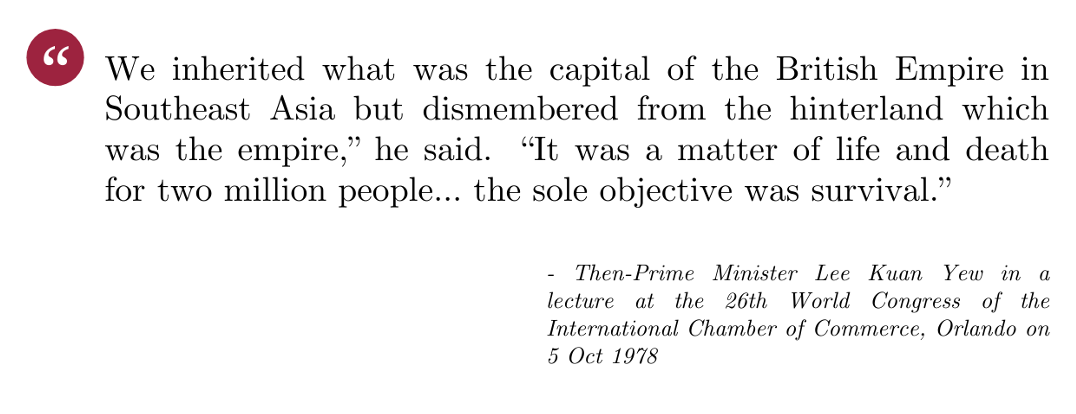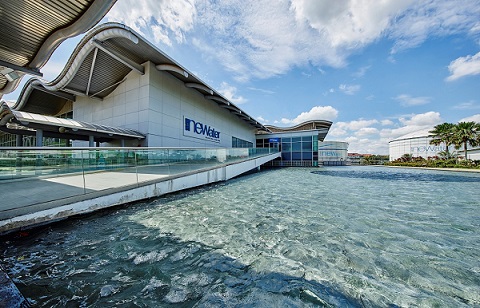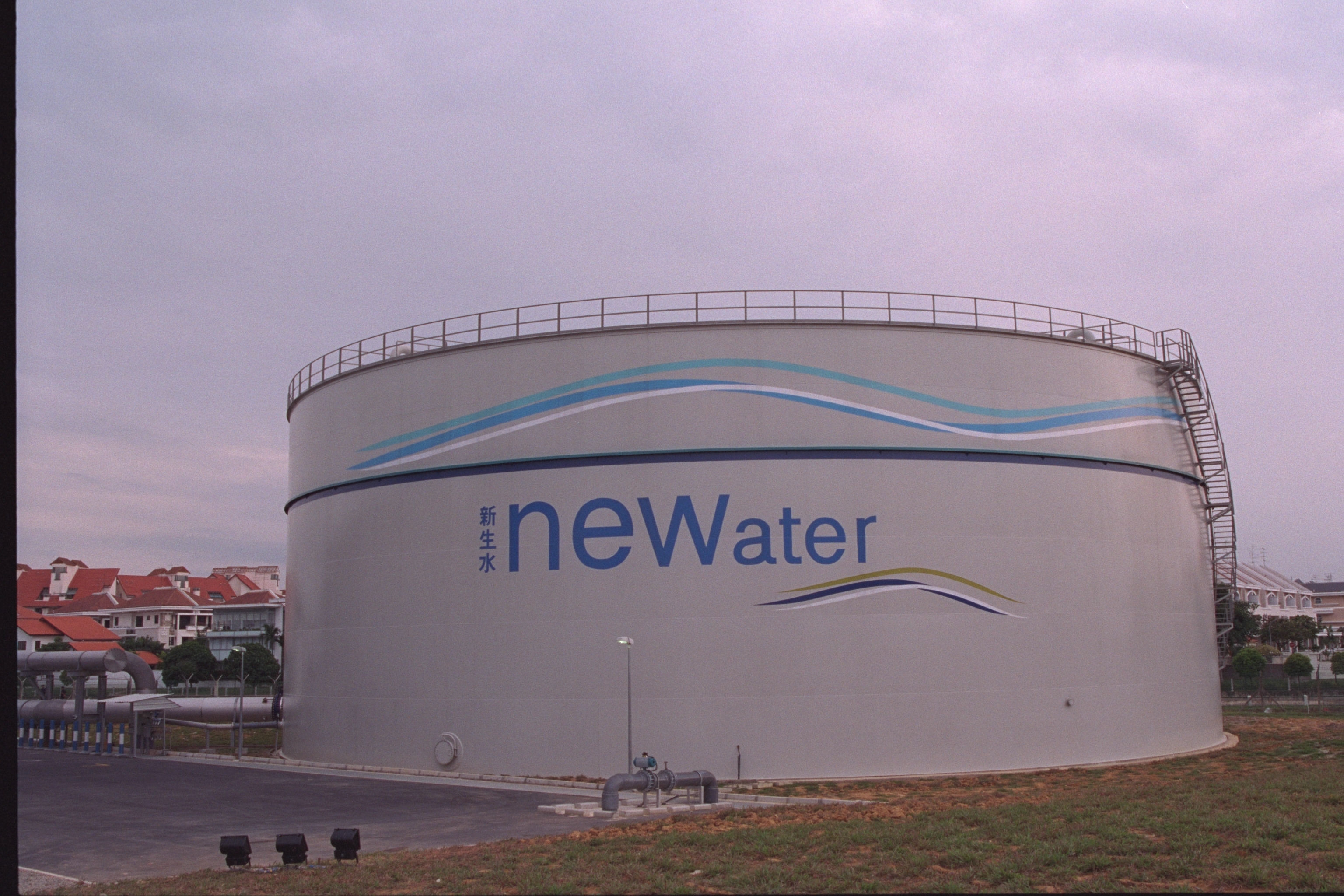Resource Innovation
Resource Constraints and Challenges

In September 2016, Singapore suffered one of its worst droughts in history. Barely any rain fell over 27 days between January and February – a record high. Once verdant grass turned brown and white, and our island was suffused with heat.
The situation was dire due to the fast depleting water levels at Johor’s Liggiu Reservoir, Singapore’s main water source from Malaysia. At one point, water levels fell to as low as 20 per cent. Singapore still relies heavily on Johor for its water needs. Under the 1962 Water Agreement with the Johor State government, Singapore draws up to 250 million gallons of water from the catchment area daily. The prolonged drought signalled a real possibility that Singapore’s water supply could be badly affected. Singapore drew up contingency plans to restrict water use for non-critical activities such as plant watering and car washing.

Fortunately, there was no need to put these plans into effect. Decades of long-term planning and diversifying our water sources meant that we could rely on other avenues. Desalination and NEWater plants ran at high capacity to replenish the local reservoirs. The Government also raised public awareness by encouraging everyone to save water.

It was a stark reminder of Singapore’s vulnerability as a small island with a lack of natural resources. However, it was also a reflection of how we have turned this weakness into a strength. The water story is just one point in the larger story of how we have managed our lack of natural resources over the decades.
These are reasons why there has been no need for water rationing in Singapore since 1964. Water has always been a strategic and existential issue for us. As we are one of the most water-stressed countries globally, Singapore always looks to stay one step ahead to ensure our water security. We aim to become self-sufficient by 2061, when the 1962 Water Agreement expires.
After Singapore separated from Malaysia, the challenges were clear. The absence of a hinterland meant a lack of access to vital natural resources. We would have to rely on external sources for our water supply and energy to power our industries, light up our homes, and build infrastructure. The situation was so dire that when Singapore separated from Malaysia in 1965, our founding Prime Minister Lee Kuan Yew described Singapore as “a heart without the body”.

For Singapore to survive, one of the first things that Mr Lee and his team did was obtain the necessary resources and ensure that they would last for generations. For Singapore to succeed, planning for our resource use had to be long-term, focused, and dynamic.
But it was clear from the start that success was not only going to be decided by government policy. Singaporeans had to play a role in the efforts. Indeed, we have gradually become active participants in water-saving campaigns. This collective sense of civic responsibility has helped us effectively manage our limited resources.
Singapore has come a long way in addressing our resource limitations. As a tiny island state with no natural resources, we have had to rely on a disciplined approach focused on four key pillars to manage our constraints: innovation, long-term planning, civic ownership and adaptation.

Resource Innovation
With a tiny landmass lacking in any natural resources, Singapore is unlike any other country in the world. There was no blueprint for success that Singapore could follow.
As a result, we had to think unconventionally and summon up a spirit of innovation to solve our unique problems, especially when dealing with the lack of resources.
Example: Water

 Images: MICA courtesy of NAS and PUB
Images: MICA courtesy of NAS and PUB
NEWater – reclaimed water purified with membrane and ultraviolet technologies – is perhaps Singapore’s most famous example of this innovative spirit. The idea of turning wastewater into drinkable water emerged as early as the 1970s when Singapore commissioned a study to explore the feasibility of producing clean reclaimed water.
However, it was only 20 years later when technology caught up with the idea that NEWater became a reality. By the 1990s, the development of cost-effective membrane technology allowed Singapore to push ahead with NEWater. Within a decade, our dogged determination paid off. In 2003, NEWater made its public debut with two plants at Bedok and Kranji. After decades of planning and innovation, it was a huge step towards our goal of self-sufficiency.
There was initial scepticism that NEWater was safe to drink. Many balked at the thought of drinking waste and sewage water. In response, PUB set out to raise public awareness of the stringent safety measures in producing the ultra-clean NEWater.
To instil confidence in NEWater, PUB opened up its NEWater plants to the public, demonstrating the technology behind the product. To further convince the public that the water was safe to drink, Singapore enlisted the support of community leaders, scientists and politicians to correct misconceptions about NEWater. Then-Prime Minister Goh Chok Tong endorsed NEWater multiple times, such as drinking a bottle in front of the nation in a NEWater toast during the 2002 National Day Parade and after a tennis game at the Istana.
 Image: Ministry of Information, Communications and the Arts Collection, courtesy of National Archives of Singapore
Image: Ministry of Information, Communications and the Arts Collection, courtesy of National Archives of Singapore
Thinking out of the box is one way we have adapted. This innovative energy is a key theme that runs throughout our short history. Another area that we have consistently applied innovative thinking is in our approach to energy resources.


